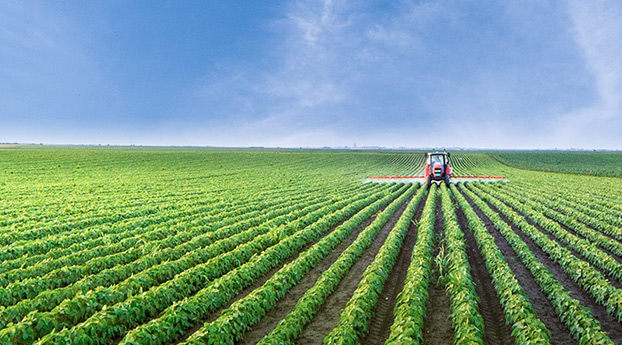Nantong City, Jiangsu Province: Vigorously develop regional water supply to achieve a new pattern of urban-rural drinking water integration
Release time:2015-08-27 Views:306
Facing Shanghai and Suzhou across the river, Nantong is one of the first 14 open coastal cities in China and one of the most dynamic cities in the Yangtze River Delta. The city has a land area of 8001 square kilometers, with 206 kilometers of coastline, 166 kilometers of Yangtze River embankment shoreline, and 8,701 square kilometers of sea area. The city has a registered population of 7.665 million. It has jurisdiction over 2 counties, 3 county-level cities, 3 districts, the state-level Nantong Economic and Technological Development Zone and the state-level comprehensive Bonded Zone, with 73 towns, 2 townships and 26 sub-district offices.
First, urban and rural integrated water supply development process
Drinking water safety is a basic work related to the national economy and people's livelihood. For a long time, Nantong Municipal Party Committee and Municipal government always put drinking water safety in a prominent position, pay attention to the promotion of economic and social development and solve the problem of drinking water safety strongly expressed by the people, with the urban and rural river diversion area water supply as the starting point, strengthen the construction of water supply capacity, relying on the river diversion area water supply project to form the main water supply network to counties (cities), towns and cities. At the same time, we will lay down and renovate pipe networks in towns and villages to solve the problem of unsafe drinking water in rural areas. The city's urban and rural water supply pattern has undergone fundamental changes, and the water supply industry has made great progress. For many years in a row, safe water supply has been achieved without accidents, effectively guaranteeing the health of the people and the sustainable development of economy and society.
At present, Nantong City has basically achieved the expected goal of the whole city's urban and rural residents drinking water from the Yangtze River, the regional water supply coverage of towns and villages has reached 100\%, and the population penetration rate has reached 98\%. In 2014, the city's urban and rural total daily water consumption was about 1.7 million cubic meters, and is expected to reach 1.8 million cubic meters by the end of the 12th Five-Year Plan. The total daily water supply capacity of the water supply plant in the diversion River area has reached 2.1 million cubic meters, which can meet the water demand of the whole city in the future period.
1. Construction of regional water supply project for river diversion
In recent years, Nantong has built 5 regional water supply plants for river diversion, with a total daily water supply capacity of 2.1 million square meters, and built 7 main water transmission lines, with a total length of 500 kilometers. In addition, in order to build a regional water supply network system, counties (cities) and districts have completed the construction of supporting secondary dry water transmission lines for more than 1,200 kilometers. A total of more than 10 billion yuan has been invested in the construction of regional water supply network, which is the largest single government investment in a livelihood project so far.
2, rural drinking water safety project construction
We will continue to rely on regional water supply and steadily advance the safety of drinking water in rural areas. First, make full use of regional networked water supply and take Yangtze River water as the source of drinking water in rural areas, fundamentally solving the problem of unsafe drinking water sources in rural areas. Second, we carried out the reconstruction and construction of rural secondary water supply network simultaneously, gradually removed and closed small water plants in towns and villages, made overall planning and unified standards, improved the quality of water supply, raised the guarantee rate and reliability of rural water supply, and effectively solved the problem of rural drinking water safety. Third, taking into account the needs of current and long-term development, we should link the plan for safe drinking water in rural areas with regional water supply plans, new rural construction plans, town and town construction plans, and overall plans for land use.
From 2008 to 2012, a total of 2.06 million rural people and 229,000 teachers and students in rural schools were provided with unsafe drinking water through the construction of the rural drinking Water Safety Project. A total of 17,800 kilometers of rural water supply networks have been laid, and 13 new booster pump stations have been built. 1.01 billion yuan has been invested in the construction, of which 557 million yuan has been subsidized by the central and provincial governments.
After the completion of the project construction task listed in the national planning, Nantong City continued to increase the pressure by itself, comprehensively started the construction of water supply network in rural towns and villages, and reformed all the aging pipe network not listed in the national planning and the last round of water transformation. From 2012 to 2014, the whole city carried out the construction of water supply network for towns and villages involving more than 2.37 million rural population, with a total investment of 1.054 billion yuan, all of which came from the local finance.
Two, the main experience
The integration of urban and rural water supply is a popular project and a systematic project, with large input, long duration and large number of beneficiaries. In order to ensure the smooth implementation of the work, Nantong City based on the reality, in-depth research, careful overall planning, strict organization of implementation, each responsible subject due diligence, to provide a guarantee for the smooth implementation of the project.
One is to establish an organization and define its responsibilities. Since 2008, the municipal government has listed it as a private practical project every year, and improved the work organization and leadership system. It is clear that the main municipal leaders take the lead, and the two vice mayors are respectively responsible for the two major projects of regional water supply and rural drinking water safety, and further enrich and strengthen the leading group for promoting regional water supply projects and the leading group for rural drinking water safety construction. And respectively in the municipal construction Bureau and the municipal water Bureau set up two major project promotion office. The Municipal Bureau of Construction is mainly responsible for the construction of water plants and urban water mains; each county (city) is responsible for the construction and maintenance of trunk pipelines and secondary trunk pipelines in the administrative region under its jurisdiction; water conservancy departments at all levels are responsible for the implementation of pipe networks below the township level and into villages and households. Each county (city) has also established corresponding organization and coordination organs, and further clarified the work responsibilities of construction, water conservancy and other related departments, and decomposed the work objectives and tasks at each level, forming a work responsibility system that is implemented at each level, and implementing a linkage mechanism at the city, county and township levels.
Second, orderly planning and mechanism improvement. There are two management modes in the water supply system above county level. One is the eastern mode. According to the principle of "separate production and supply, separate network construction, separate pricing and territorial management", urban water works provide unified water supply, and the main pipelines of water works and urban sections are constructed by Nantong Water Supply Company. County water main pipeline, common pipeline construction, investment according to the proportion of water, special pipeline construction. The second is the western model. Adopting the BOT mode of market operation, Singapore Pengharrier Water invests in the construction of water plant, the franchise period is 25 years, and the implementation of "unified plant construction, unified network construction, the implementation of the same price". Under the county water supply system, the city is also divided into two modes. One is Qidong, Hai 'an by the county (city) state-owned water company unified management mode, that is, "integrated management" mode. All the original township private water plants will be bought back, each township set up water supply management station (branch), unified management. Second, Tongzhou, Rugao and other places to adopt the county, township two level management mode, namely "hierarchical management" mode. County (city) and district water companies will resell the water source sold by Nantong Water Company to each township water supply station, which shall be responsible for the management of water supply within its own scope. In order to strengthen management, counties (cities) and districts have repurchased private water plants to be owned by the government, and closed all deep underground Wells.
Third, strict control and safe water supply. The purpose of the implementation of urban and rural integrated regional water supply is to let the broad masses of people to drink "relaxed water". Therefore, Nantong City strictly in accordance with the relevant regulations, do a good job of water source, ex-factory water, pipe network water quality monitoring. Drawing up construction plans to meet the standards of water source areas and implementing construction projects to meet the standards. Construction of water source video monitoring system to achieve multi-angle real-time monitoring of water source. The construction of land isolation fence, protection zoning boundary plate and comprehensive management system of water source area will be completed. To control the total amount of pollutant intake, determine the total amount of COD and ammonia nitrogen limited in 188 water-function zones of Nantong City, and put forward annual pollutant reduction targets and suggestions on limiting the total amount of pollutant discharge by stages. At the same time, full coverage of water quality monitoring in water functional zones will be carried out, and monthly reports on water quality in water functional zones will be issued. In addition, in order to improve the level of response to water pollution emergencies, emergency plans for water supply emergencies have been prepared, emergency devices and materials have been fully equipped, hidden dangers have been regularly checked, and safety prevention and early warning capabilities have been strengthened.
Fourth, mutual supply of raw water, networked water supply. In order to ensure drinking water safety in urban and rural areas, since 2012, the construction and management of emergency water sources has been strengthened comprehensively, focusing on the requirements of "clean water connectivity, raw water mutual supply, deep well emergency response, deep treatment, and original plant retention". Water supply pipelines of the three main water plants in urban areas have been connected to realize "clean water interconnection". Twenty-five deep Wells have been dug in Chengbei Reservoir and the former Port of Nantong Water Plant, which are in the hot standby state and realize the "deep well emergency". Combined with the ecological wetland park, an emergency reservoir with an effective storage capacity of 2.85 million cubic meters has been built, and water supply to urban water plants has begun, realizing "mutual supply of raw water". The advanced treatment process of urban water plants has been completed and put into operation to achieve "advanced treatment", and the "advanced treatment" project of other major water plants is being accelerated. With the Yangtze River as the city's main water source and reservoirs and deep Wells as emergency backup water sources, the urban emergency water supply pattern of "dual water sources" has basically taken shape.
(Excerpt from China Water-Saving Irrigation Network)

















